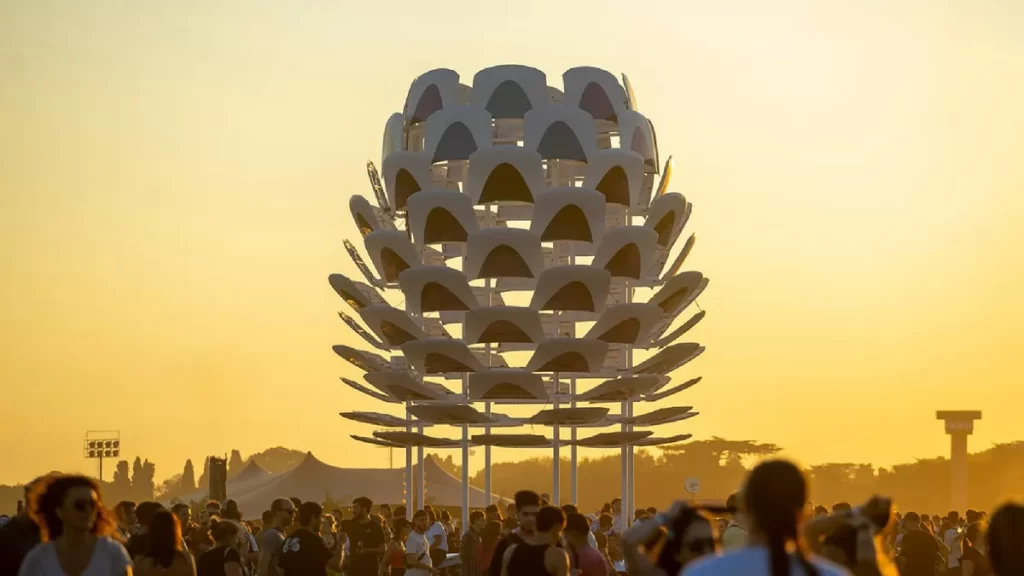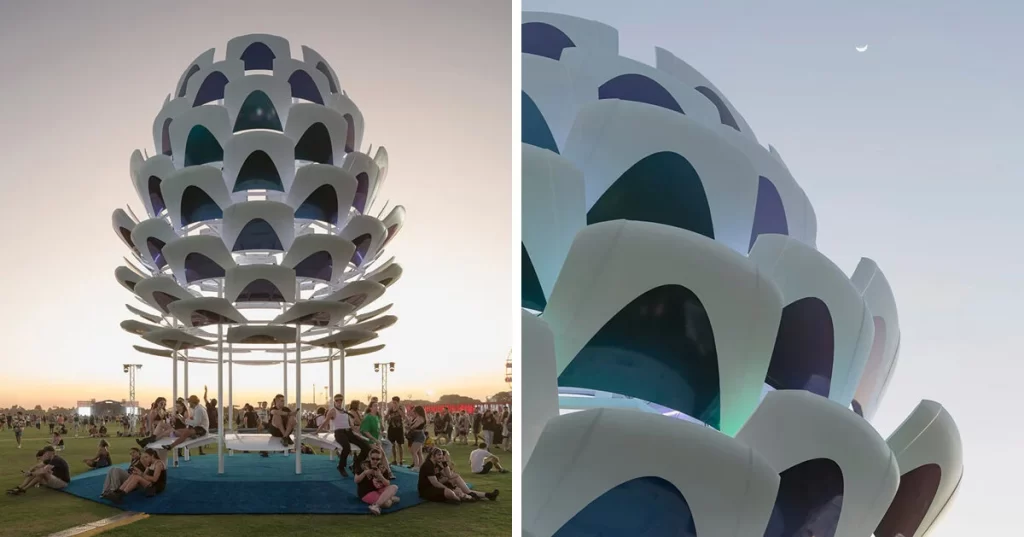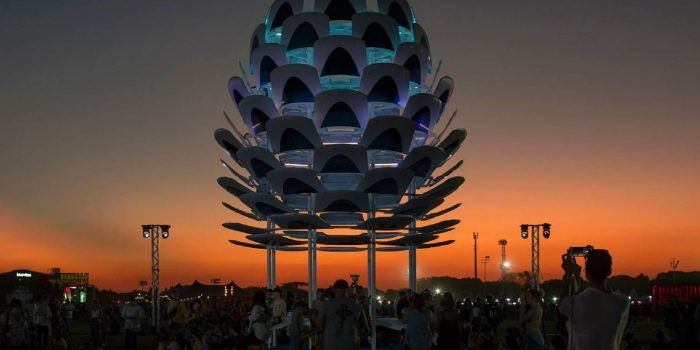Argentinian design firm El Estudio Normal and director Martín Huberman have unveiled a mesmerizing installation made from 95 Volkswagen Gol car hoods. Named Capot, which means “car hood” in Spanish, the sculptural epicenter resembles a pine cone and serves as both an artistic backdrop and a shaded gathering space for festival-goers at the Lollapalooza festival in Buenos Aires.
Capot is part of El Estudio Normal’s larger research project, Autopartes, which explores new methods of design using everyday car-related objects. By repurposing car hoods into a visually stimulating installation, the project hopes to enhance the relationship between design, industry, and the potential users of these new creations.

The use of recycled car parts in art and design is not new, but the Capot installation showcases the potential for these objects to be transformed into functional and aesthetically pleasing structures. The installation highlights the beauty of everyday objects that are often overlooked or discarded.
Moreover, Autopartes’ exploration of new design methods using recycled car parts could have a significant impact on the automotive industry. As consumers become more environmentally conscious, car manufacturers may face pressure to create more eco-friendly products. Additionally, repurposing car parts could reduce waste and extend the life cycle of existing materials.
The Capot installation invites viewers to consider their relationship with cars and the objects associated with them. It is a reminder that even the most mundane objects can be transformed into something beautiful and meaningful with a little imagination and creativity.
El Estudio Normal’s Autopartes project is an exciting development in the world of design and architecture. As the project continues to evolve, we can expect to see more innovative uses of recycled car parts in art and design. The possibilities are limitless, and the only constraints are the designers’ imaginations.

Overall, the Capot installation serves as a powerful example of how art, design, and sustainability can intersect to create something both visually stunning and environmentally responsible. We look forward to seeing what other designs Autopartes will produce and how the project will impact the automotive industry in the years to come.


